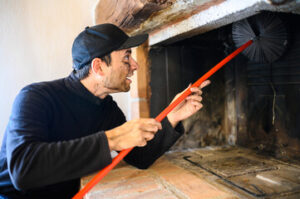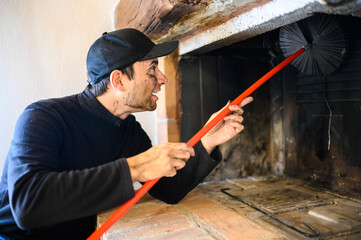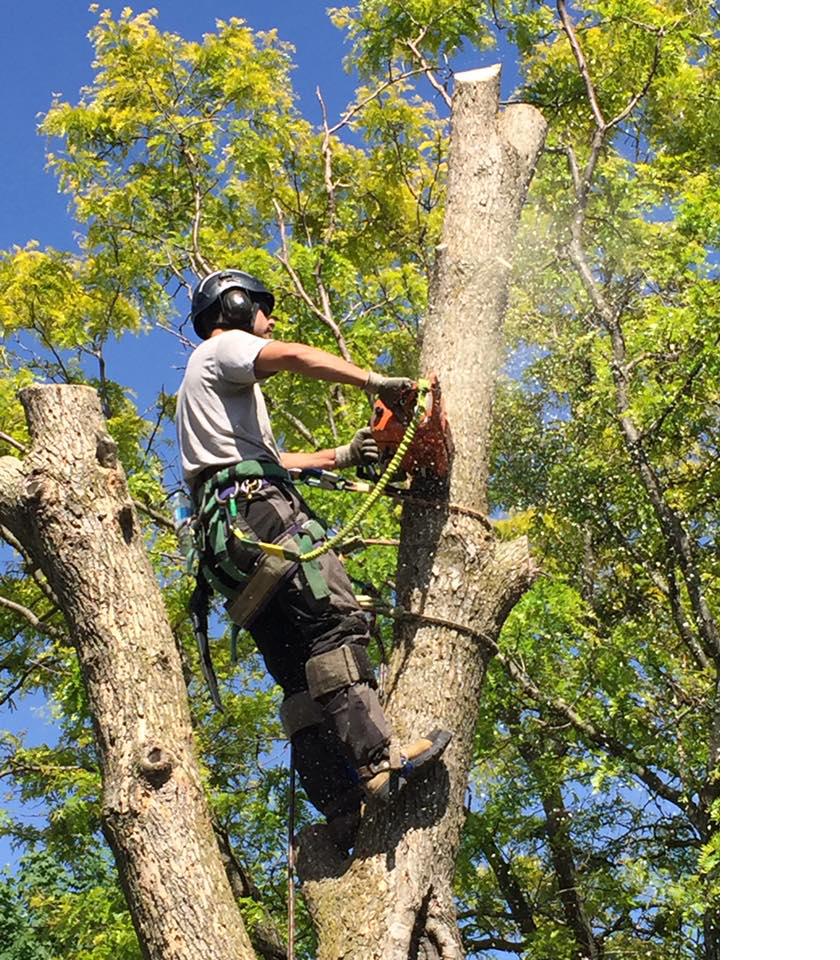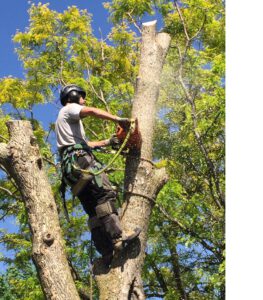Despite new tools that make climbing up chimneys less necessary, human sweeps remain in high demand. The career is often dirty and grimy, but a good chimney sweep knows how to limit their full-body filth using protective gear. Depending on the company, they may also need to transport equipment several times per day, so a certain level of physical fitness is required.
Clean Chimney Sweep Charleston needs to have a basic can-do attitude because their job can be dangerous and exhausting. Chimney sweeps work on ladders, which means that they have to work above ground level and deal with weather elements such as snow and ice. Chimney sweeps also use a wide variety of tools to clean fireplace and chimney systems, including brushes, power vacuum cleaners, specialized equipment to inspect a chimney’s integrity, and more.
Because of the flammable nature of soot and creosote, chimneys must be cleaned regularly to prevent fire hazards and toxic gases from building up in the home’s structure. It’s important that a chimney sweep be able to explain this in an approachable manner so that homeowners understand the risks of a dirty chimney and the benefits of regular cleaning and maintenance.
When hiring a chimney sweep, it’s essential to get references and check the company’s reputation online. Be wary of unqualified “sweeps” who may try to frighten homeowners into agreeing to expensive repairs that they don’t actually need. A good chimney sweep will be happy to provide contact information for past clients who can attest to their professional and honest services.
Chimney sweeps are required to be fully insured, so that they’re covered in the event of a mishap while working at a customer’s home. They’re also required to carry a tool belt with a face mask, which protects against dust particles that can irritate lungs while sweeping a chimney system. While this may seem like a minor detail, it’s vitally important for safety and health.
Chimney sweeps must be able to communicate effectively with customers and have a “can-do” attitude. They need to be able to understand how fireplaces and chimneys function, so that they can make recommendations for repair or maintenance in an educated fashion. This includes explaining how even a small amount of soot can lead to chimney fires and carbon monoxide poisoning, and how a clean chimney can save energy costs by burning more efficiently.
A Ready-To-Learn Attitude
A good chimney sweep is ready to learn and keep up with industry standards. He must be able to understand the long-term dangers of a build-up of third-degree creosote in fireplace and chimney structures. He must also be willing to educate customers about the importance of chimney maintenance and establishing a regular cleaning schedule. The modern chimney sweep often utilizes a combination of up-close inspection techniques and technology such as video cameras, drones and smoke-generating machines to assess the integrity of a chimney.
Chimney sweeps need to be physically fit to perform their duties. They are often required to climb, crawl and walk up and down steep ladders for extended periods of time. They must be able to withstand the heat of the fire and the dust of the job. Sweeps may also be exposed to a variety of chemicals that are used in the cleaning and masonry repair process.
Many chimney sweeps are independent contractors and must generate their own client base through word-of-mouth, social media or local advertising. They also must be able to balance the demands of the business with personal finances. This may include generating leads in the spring and summer, when demand for chimney services is low, or stashing away earnings to make it through leaner months.
A professional chimney sweep should always be a member of the National Chimney Sweep Guild (NCSG). This shows that they are dedicated to being experts and professionals in their field. They should also be able to provide proof of their CSIA certification when asked.
Before hiring a chimney sweep, check online reviews and references. A reputable chimney sweep will be happy to provide you with names and numbers of previous clients who can attest to the quality of his work and his professionalism.
When your chimney sweep arrives at your home, he should be in a clearly marked and/or branded vehicle or uniform with a company name badge or identification. Be sure to verify that the individual who arrives at your home is indeed a qualified, trained chimney sweep by asking to see their CSIA credentials and proof of insurance.
Physical Fitness
Chimney sweeps often work from a ladder, and the ability to navigate safely in tight spaces is essential. Those who wish to become chimney sweeps should be able to handle the physical demands of the job, and they must also have no fear of heights. In addition to cleaning, chimney sweeps may need to access rooftops to conduct inspections of fireplaces and heating systems, which requires a steady hand. Professional liability insurance is vital for chimney sweeping businesses, as it protects the business against claims of negligence or mistakes during the course of service.
As with any profession, chimney sweeping has its own set of rules and regulations that must be followed to ensure employee safety and customer satisfaction. It is recommended that prospective chimney sweeps acquire all necessary training and certification before attempting to work in the field. This can be accomplished by apprenticeing with an experienced chimney sweep, attending a specialized sweep school, or by participating in industry workshops and seminars.
Regardless of the method chosen to learn the trade, it is important for prospective sweeps to have a strong desire to succeed. The chimney sweeping business is competitive, and it takes a lot of effort and dedication to succeed. In order to attract and retain customers, chimney sweeping companies need to offer competitive hourly wages and comprehensive benefits packages.
It is also crucial for prospective chimney sweeps to understand the long-term dangers of creosote build-up in fireplace and chimney structures. The toxic substance can be flammable and is highly dangerous to human beings, causing health problems including respiratory issues and lung damage. Chimney sweeping professionals need to be able to educate homeowners on the importance of keeping chimneys clean and establishing a regular maintenance schedule.
It is also critical for prospective chimney sweeps to have adequate funds to cover start-up costs and other expenses associated with starting a new business. The cost of equipment, marketing, and advertising must all be factored into the initial investment. In addition, a suitable workspace is needed to accommodate equipment and supplies. Choosing an affordable location that is convenient to the target market can help reduce start-up costs and reduce the risk of financial failure.
Safety First
Chimney sweeps have a lot on their plates, but they also need to be safety-oriented. They must be able to follow basic guidelines for working with dangerous, flammable materials and use the proper equipment to handle a chimney or fireplace that may be unstable. They may need to climb a ladder at heights and use their hands in tight spaces, making an ability to navigate these areas without issue important. They must also be able to work outdoors in all weather conditions, including snow and ice, so being comfortable in these environments is essential.
The primary job of a chimney sweep is to clean the chimney flue and remove creosote, a dark, sticky or flakey substance that can build up on chimney liners. Creosote is the cause of many chimney fires, which can be deadly. It can also prevent smoke from drafting properly and could allow it to back up into the home, carrying deadly carbon monoxide with it.
Other duties include removing obstructions in the chimney flue caused by leaves, twigs, small animal nests and other debris. These obstructions can interfere with the drafting of smoke and could carry hot debris into the home, which is another reason for regular chimney sweeping. Chimney sweeps are able to remove these obstructions with brushes and other tools that they have in their toolboxes, along with a ladder and vacuum cleaner.
When hiring a chimney sweep, it is crucial to check their credentials to ensure that they are certified by the Chimney Safety Institute of America. This organization hosts a searchable database to help consumers find a qualified professional near them. Consumers should also ask family and friends for recommendations and review online reviews of their experience with a particular sweep before deciding to hire them.
The best chimney sweeps will be able to provide a thorough inspection and clean the chimney and fireplace to ensure that the structure is stable and safe. They should also be able to recommend any repairs that are needed and give an estimate of the cost for those services. If a sweep attempts to frighten the consumer with talk of carbon monoxide poisoning or house fires, it is important that they get a second opinion and consider seeking another company for their services.


